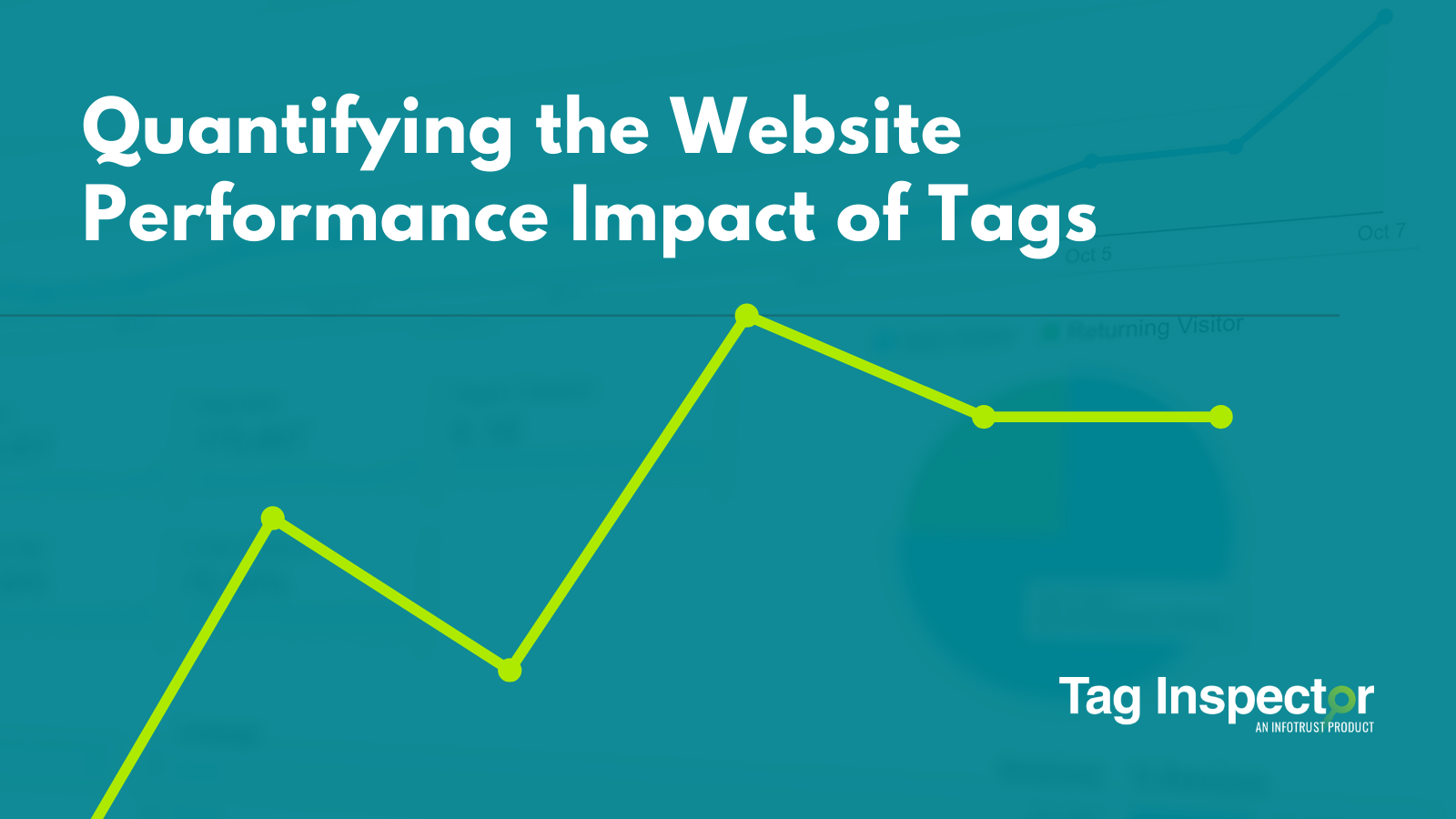Your company’s marketing department is about to launch a new campaign. To track effectiveness and build audiences for remarketing, they request that a new tag be added to the website. All seems in order, but the web operations and performance teams raise concerns that the new tag will slow down page-load times. They put a hold on the addition until they can further evaluate the possible impact.
What gives? And which team is justified in their stance?
This is a common scenario that we experience all too often when working with partners, regardless of their industry. The argument is complicated even further when neither team can provide clear data supporting their position. Marketing teams see the many other tags already deployed and can’t see how this one could be any different. Meanwhile, the performance and operations teams have been reading articles about how tags drag down site performance and are now convinced that’s the case.
We’ve written extensively in the past about metrics that matter as they relate to tags and performance. Taking this one step further, wouldn’t it be nice if there was a method through which you could actually quantify the performance impact of all the tags loading on your site?
Lucky for you, Tag Inspector has functionality to accomplish this task.
The Method
Unique to Tag Inspector’s Scanning technology is the ability to block tags from loading. When running a Scan and blocking a tag, it simulates the behavior as if you removed that tag from the website. Using this functionality, we are able to run Scans to collect page performance data for control behavior (all tags loading as normal) and then for each variant behavior (blocking each tag individually to see page performance if that tag was not on the site). Running these tests a significant number of times produces a data set with which we can run an advanced statistical analysis.
The Analysis
The statistical analysis done on the dataset of page performance metrics across all tag deployment scenarios results in three primary outputs:
1. Impact Frequency Analysis
The Impact Frequency Analysis tells us the proportion of pages, on which each tag is loading, that a statistically significant impact on page performance is observed as a result of each tag loading. In many cases a tag may be having a statistically-significant impact on some pages, but not on others. This may be due to conditionally piggybacking other tags on certain page categories or site sections, or potentially having a more advanced and heavy configuration on some pages versus others. Ultimately the Frequency Analysis allows you to see which tags are truly impacting performance metrics on the largest proportion of pages.
2. Impact Factor Analysis
The Impact Factor Analysis tells us the proportionate performance impact of each tag. The impact is considered on the pages on which the tag in question is having a statistically significant impact on page performance times. This tells us, in the cases where a tag is actually impacting performance, what the level of impact seen is. Ultimately we can use these impact factors to rank and show the worst offenders.
3. Performance Lift Analysis
The Performance Lift Analysis shows the mean lift—or increase in page load time (in milliseconds)—that can be expected from each tag being implemented on a page. This is derived from the impact of each tag as analyzed in the data set. Also included are upper bounds and lower bounds to show the range of lift (in milliseconds) expected from the tag being implemented.
Insights from these three analyses allows us to quantify each tag’s impact on page performance, leading to a meaningful discussion about the business benefit of a particular platform compared to the performance cost. Ultimately an informed decision can be made if a tag can or should be added to a website.
Weighing Performance Cost vs. Business Value of a Marketing or Advertising Platform
The goal of any company’s website is to help the organization make more money, directly or indirectly. To accomplish this goal, companies use a number of advertising platforms to attract the right users, marketing platforms on the site to improve engagement, and other platforms to make the user experience such that people seamlessly move through purchase funnels to conversion. All of these platforms enabling these actions require tags.
To conduct the evaluation of business value versus performance cost, we must first understand the business value we attribute to each of the platforms running on our website. Considerations can include the amount of revenue attributed to channels associated with the platform, a proportion of revenue from users that interact with a platform on our site, etc. Thinking about the ways in which a platform impacts the user’s path to purchase and then attributing value gets you this business value number.
Against the value amount, we need to weigh the performance cost of each tag. A key aspect of user experience and driver of user abandonment is page performance and response time. Different studies and organizations put the monetary value of each second of increased load time at different levels. Figure out which is right for your organization and use that as the base figure in the calculation. Using this valuation of each second of increased load time, multiply that by the mean impact lift as determined by the Performance Impact Analysis above. With this metric you can quantify the monetary impact of a tag loading on your site and compare with the business value calculations done above.
Adding in this layer of analysis to any tag audit and evaluation initiative will result in the ideal technology stack architecture for your organization.
Observations
In isolation, tags rarely have a significant performance impact. It is the aggregation of tags that lead to page performance issues. As such, tags that act as a container and load in (or piggyback) additional third parties are where we see the largest performance impact. Think about it: Removing a tag that is responsible for loading in an additional 10 tags has the realized effect of removing 11 total tags. This greatly cuts down on the total number of requests and amount of scripts necessary to be downloaded by the browser.
At the end of the day, site performance will always be a key objective evaluated and optimized by any organization operating web properties. As such, it must be a consideration as a part of any comprehensive tag governance policy and process. Quantifying the performance impact of each tag, as made possible by the Performance Impact Analysis, is a critical input to determine your tagging architecture.
Interested in learning more about how Tag Inspector can help your organization quantify the performance impact of your tags? Or maybe you just want to chat about what tag governance means for your business? We’d love to chat! Contact us to get a discussion started.

